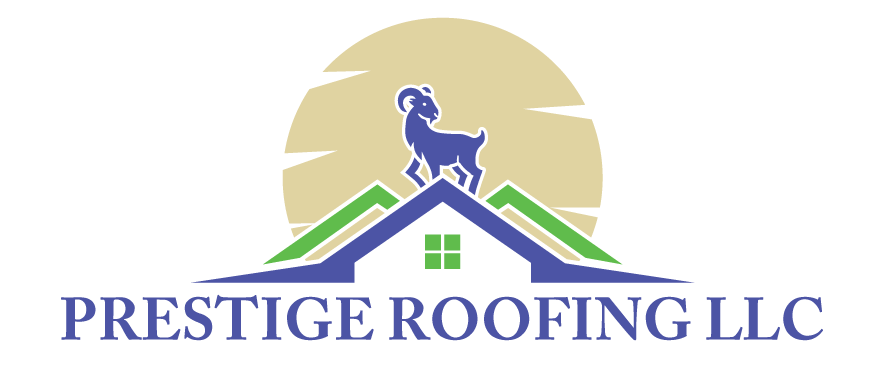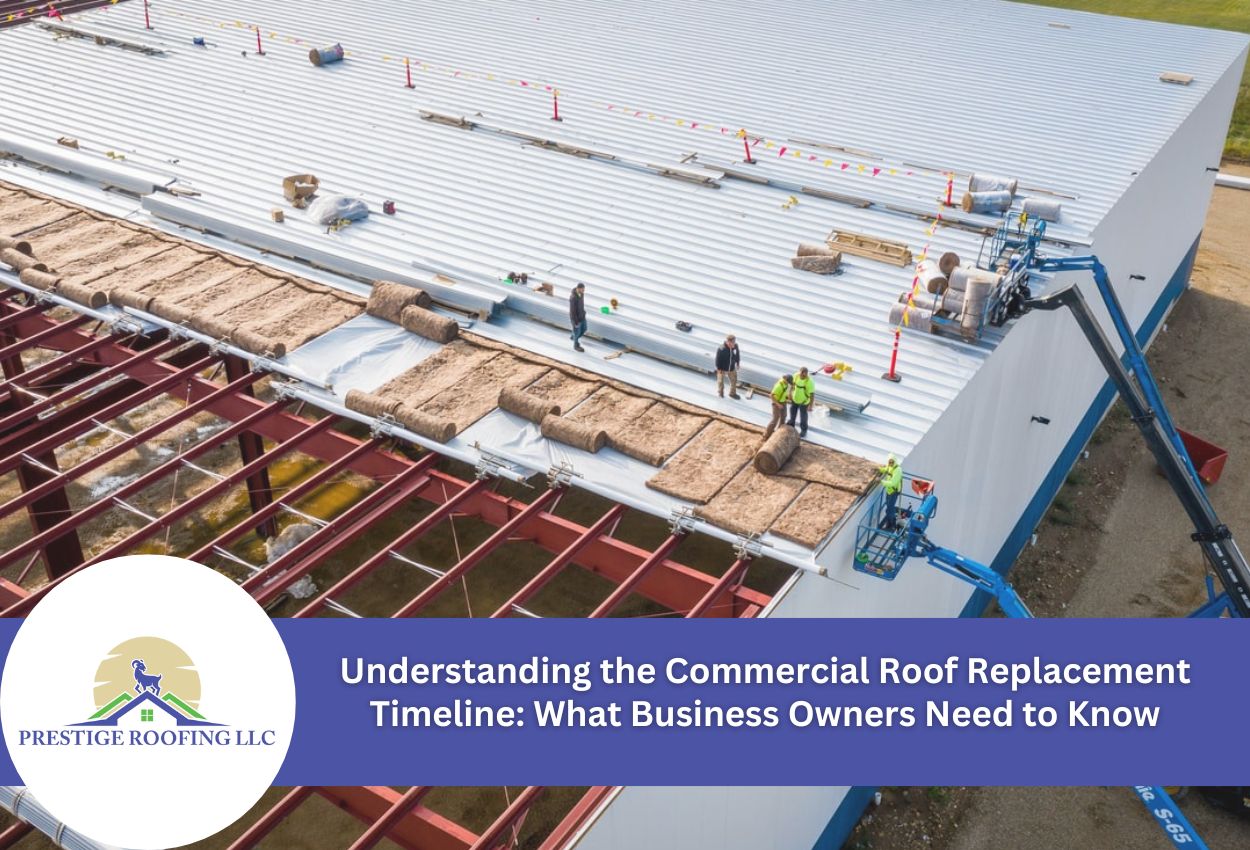Planning a commercial roof replacement requires careful timeline management to minimize business disruption. For Green Bay business owners, understanding how long a roof replacement project will take is essential for scheduling, budgeting, and operational planning. Commercial roof replacements typically involve multiple phases, each with specific timeframes that can vary between projects.
The duration of a commercial roof replacement depends significantly on the size of your building, the roof type, and specific conditions unique to your property. Most commercial flat roof replacements in the Green Bay area take a few weeks from start to finish, though larger facilities may require a month or more. Weather conditions in Wisconsin can also impact the project duration, with snow, rain, and extreme temperatures potentially extending the timeline.
Business roof replacement timeframes must account for material removal, structural repairs, new material installation, and final inspections. Each phase presents its own challenges and scheduling considerations. Experienced commercial roofing contractors develop detailed project timelines that combine efficient and quality workmanship. Understanding these phases helps business owners set realistic expectations and develop appropriate contingency plans for their operations during the roof replacement process.
Assessment and Planning Phase: First Steps in Your Roofing Project
Before any work begins on your commercial roof, there is a thorough assessment and planning phase. This critical stage lays the groundwork for a successful project. When you contact a reputable Green Bay roofing contractor, they’ll schedule an initial inspection to evaluate your roof’s condition.
During this inspection, roofing professionals assess damage extent, structural integrity, insulation condition, and drainage systems. They’ll examine the building’s support structure, note any water damage, and identify potential challenges that could affect the commercial reroofing timeline. For larger buildings, this inspection process may take more than a day to complete thoroughly.
Once the assessment is complete, the pre-construction planning begins. This phase includes applying for permits from Green Bay authorities, ordering materials, which can take weeks depending on availability, and creating a detailed work schedule. Your roofing contractor will coordinate with suppliers, schedule crew assignments, and develop contingency plans for weather delays common in Wisconsin.
The roof replacement planning for businesses also involves coordination with your operations team to minimize disruption. During this planning phase, contractors establish safety protocols, equipment staging areas, and debris management strategies specific to your facility. This comprehensive preparation ensures your commercial roofing project progresses smoothly once work begins.
Material Selection and Procurement: Impact on Your Project Schedule
The materials you select for your commercial roof can significantly influence your project timeline. TPO membranes, popular for Wisconsin commercial buildings due to their energy efficiency and durability in extreme temperatures, typically have a few-week procurement period. EPDM roofing materials often have similar availability timeframes but can experience seasonal shortages during peak construction months.
Metal roofing systems, while extremely durable for Wisconsin’s harsh winters, generally require longer lead times due to custom fabrication requirements, while PVC and modified bitumen systems fall somewhere in between.
Wisconsin’s seasonal factors create additional procurement challenges. Winter weather can slow transportation of materials, while summer construction booms may deplete local inventories. To minimize delays in your commercial roof replacement process, work with contractors who maintain strong supplier relationships and can secure materials in advance of your project start date.
Material shortages, which are increasingly common in recent years, can unexpectedly extend your business roof replacement timeframe. Experienced Green Bay roofing contractors mitigate this risk by identifying alternative products, placing orders well in advance, and maintaining flexibility in the installation schedule. Early material selection is one of the most effective strategies for keeping your commercial roofing project duration predictable and on track.
Weather Considerations for Wisconsin Commercial Roof Replacements
Wisconsin’s distinct seasonal weather patterns significantly impact commercial roof replacement timelines in Green Bay and surrounding areas. Summer months (June through September) typically offer the most favorable conditions, with longer daylight hours and reduced precipitation allowing crews to work efficiently. Spring installations (April to May) can be productive but often face rain delays, while fall projects (October to November) must be carefully timed to finish before winter weather arrives.
Winter roof replacements in Wisconsin present substantial challenges. Temperatures below 40 degrees Fahrenheit can compromise adhesive performance on many commercial roofing systems, while snow and ice create safety hazards for workers. Most commercial flat roof replacement processes require dry conditions for proper membrane installation, making precipitation a major scheduling factor year-round. Experienced Green Bay contractors allocate additional buffer days during spring and fall when weather patterns are most unpredictable.
Successful commercial roofing project management in Wisconsin requires contingency planning. Professional contractors utilize weather monitoring technologies to anticipate and work around adverse conditions. Project schedules incorporate flexible phasing that allows crews to focus on moisture-sensitive tasks during dry periods while handling less weather-dependent work during marginal conditions. For business roof replacement timeframes, contractors often include weather contingency days to ensure realistic client expectations. This strategic approach to Wisconsin’s variable climate helps maintain project momentum despite possible weather interruptions.
Business Operations: Minimizing Disruption During Roof Replacement
Maintaining business continuity during a commercial roof replacement requires strategic planning and coordination. Most Green Bay businesses can remain operational throughout much of the replacement process, but understanding the most disruptive phases helps minimize impact. The tear-off phase typically creates the most noise and potential debris, usually lasting multiple days, depending on roof size. During this stage, temporary protection systems prevent weather exposure to your building’s interior.
The installation phase, while less disruptive than removal, still involves considerable crew movement and equipment operation. HVAC units may need to be temporarily shut down during certain installation stages. Scheduling these interruptions during off-hours or weekends can minimize operational impact.
Clear communication between your roofing contractor and business management team is essential. Professional commercial roofers provide detailed schedules that highlight potentially disruptive activities. This allows businesses to inform employees, reschedule sensitive operations, or temporarily relocate critical functions. Some companies successfully implement split shifts or remote work options during the most disruptive phases of the roof replacement.
Phased roofing approaches, where contractors complete one section before moving to another, offer another strategy for larger facilities to maintain operations throughout the commercial reroofing timeline. This approach may extend the overall project duration, but significantly reduces daily business disruption.
Installation Phase: Key Milestones and Duration Expectations
The installation phase represents the core of your commercial roof replacement project and happens through several distinct stages, each with specific timeframes. For most commercial buildings in Green Bay, the tear-off stage typically requires at least one day, depending on your roof size, existing material layers, and weather conditions. During this critical first step, crews remove all deteriorated roofing materials down to the structural deck.
Following the tear-off is deck inspection and repair. This essential step reveals any hidden structural issues that must be addressed before new material installation. The main installation phase, when your new commercial roofing system is applied, generally spans a few days to over a week for most standard commercial buildings. Detail work, including flashing installation, penetration sealing, and edge terminations, requires additional time to complete properly.
However, some factors can impact your commercial flat roof replacement process. Building access limitations may extend schedules, as crews must accommodate material staging restrictions. Roof complexity, including numerous penetrations, HVAC units, or irregular shapes, can add days to standard timeframes. Crew size also matters — larger, experienced teams can compress the commercial roofing project duration, while smaller crews may extend timelines but cause less daily disruption.
Wisconsin weather remains a significant variable throughout the installation phase. Professional roofing contractors build weather contingencies into their roof replacement planning for businesses, allowing flexible scheduling when rain or extreme temperatures interrupt work. This ensures quality installation despite unpredictable conditions.
Project Completion and Quality Assurance: Final Timeline Elements
The final stages of your commercial roof replacement project are crucial for ensuring long-term performance and protection. Once the main installation is complete, the project enters the completion and quality assurance phase. This period includes a comprehensive final inspection where your roofing contractor meticulously examines all aspects of the installation, including seams, flashing details, penetration seals, and drainage systems.
Documentation is a critical component of project completion. Your Green Bay roofing contractor will provide detailed warranty information, maintenance recommendations, and inspection records. Manufacturer warranties for commercial roofing systems typically range from 15 to 30 years, while workmanship guarantees often cover 2 to 10 years of protection. Cleanup is also done during this phase, with crews removing all debris, excess materials, and equipment from your property.
To maximize your new roof’s lifespan, regular maintenance is essential. Professional roof inspections should be scheduled biannually to look for signs of wear. Prompt removal of debris from drainage systems helps prevent water pooling that can damage commercial flat roofs. Wisconsin’s heavy snowfall may require occasional snow removal to prevent excessive weight on your commercial roofing structure.
The complete commercial reroofing timeline ends with a final walkthrough and project closeout meeting. This important step ensures all aspects of the project meet quality standards and provides business owners with the information needed to protect their roofing investment for decades to come.
Plan Your Commercial Roof Replacement with Prestige Roofing LLC
Understanding the commercial roof replacement timeline can help minimize disruption to your business operations. At Prestige Roofing LLC, we specialize in efficient and effective roofing solutions tailored to your needs. Whether you’re dealing with a TPO, EPDM, or metal roofing system, we ensure a smooth and swift replacement process, considering all factors from weather conditions to building codes in the Green Bay area.
Don’t let a roof replacement slow down your business. Call us today at (920) 791-0414 to schedule an initial consultation and receive a detailed timeline estimate. Let Prestige Roofing LLC help you plan effectively, ensuring your business experiences minimal interruption and your new roof is installed with precision.

